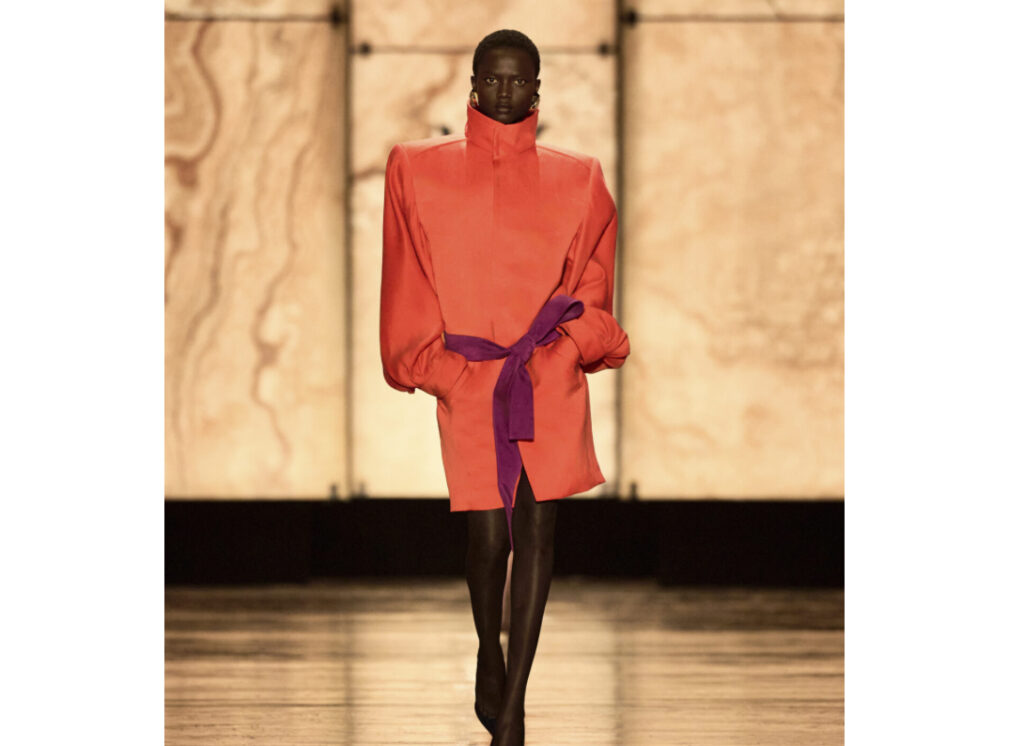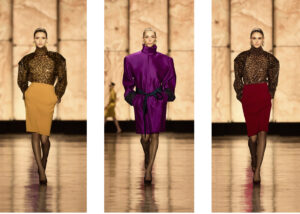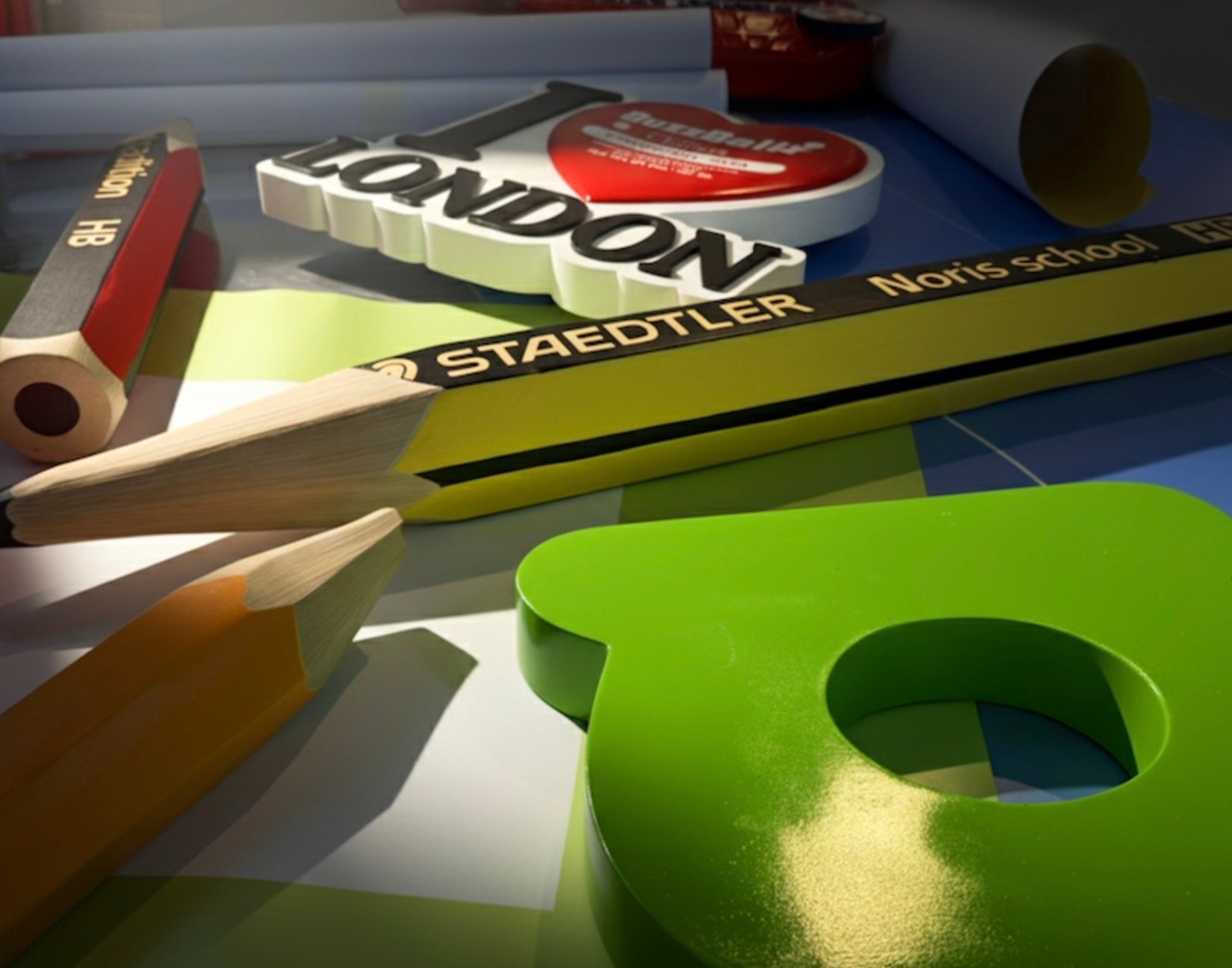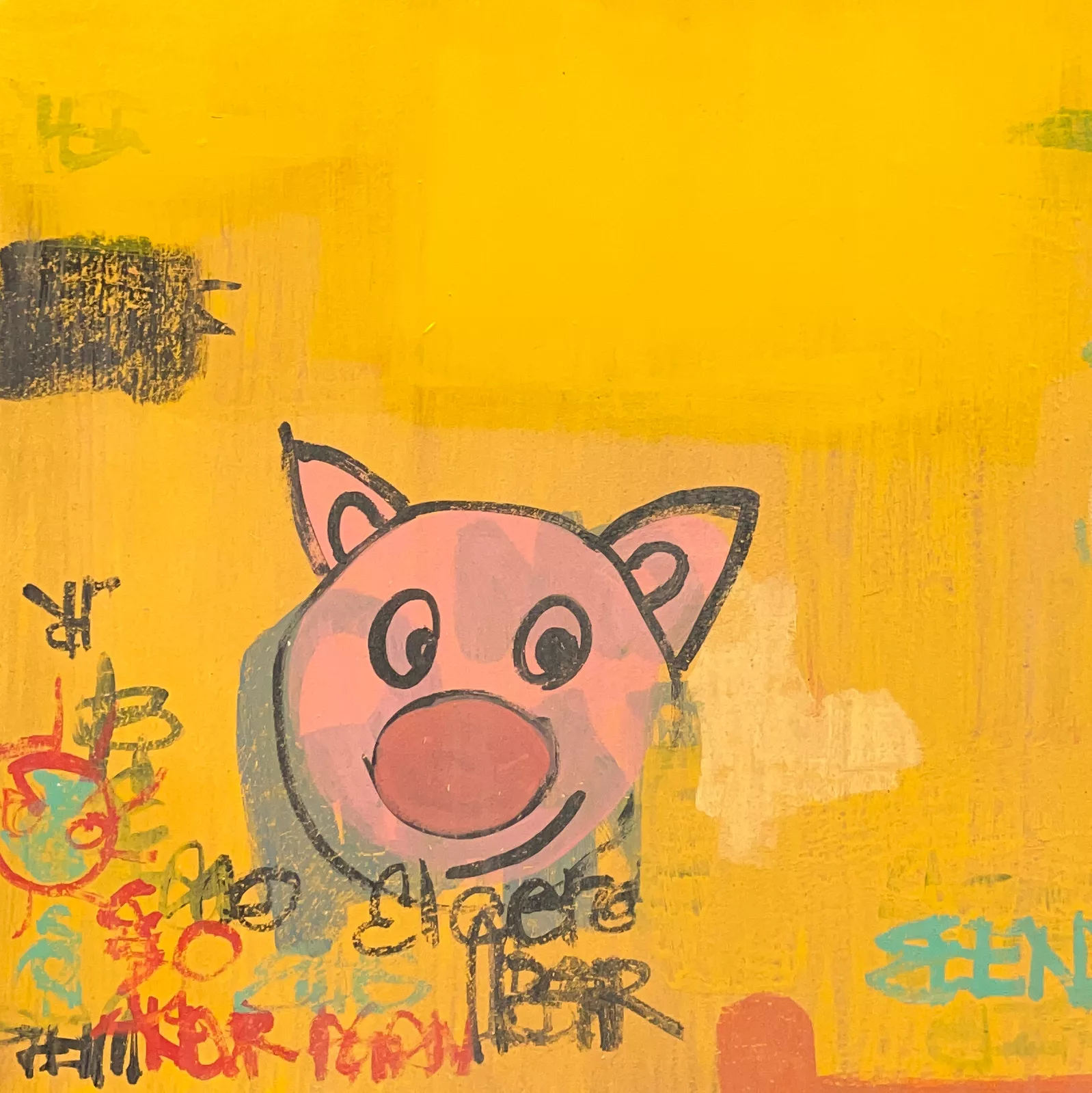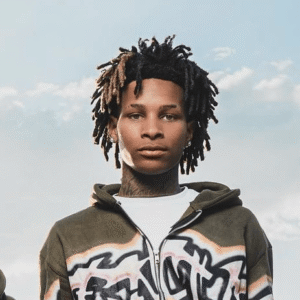In a season marked by maximalist comebacks, tech-driven gimmicks, and volume as virtue, Saint Laurent chose silence over spectacle. The Fall/Winter 2025 collection, brought forth by Anthony Vaccarello, was a soft-spoken masterclass in precision, refinement, and elemental design. It was a show that didn’t scream to be remembered—it whispered—and yet, it lingers.
Held in Paris against illuminated walls resembling geological striations—rock formations glowing with an inner fire—the setting alone hinted at what was to come: a mineral palette, subtle shifts, and silhouettes born from pressure and time. If fashion is so often surface and speed, Saint Laurent offered something deeper—a show rooted in touch, tension, and tectonic control.
The Pencil Stroke as Philosophy
Vaccarello’s stated aim was to distill the collection to its core gesture—to build looks that felt as if they were formed by “a few pencil strokes.” The metaphor is apt. There was an almost calligraphic restraint to the garments, a balance between negative space and curved line that made each ensemble feel choreographed rather than constructed.
Take the coat dresses—glossy, high-collared, and modestly belted at the waist. Their architecture, though simple, summoned a kind of Eastern elegance, with silhouettes that evoked both the strictness of Japanese tailoring and the fluidity of ink brush painting. In their pared-down strength, these pieces echoed not only Vaccarello’s design intelligence, but also Yves Saint Laurent’s quiet obsession with global classicism.
Fabric as Emotion
While the garments may have appeared unadorned at first glance, their textile composition told another story. A silk blouse, for example, might reveal itself to be treated with silicone, giving it a slightly uncanny sheen and touch. Dresses made of stretch jersey were juxtaposed with panels of guipure lace, adding contrast in both texture and tradition. It’s here that Vaccarello excels—not in shouting, but in whispering, inviting the eye to linger.
Model Bella Hadid, always a reliable barometer of contemporary poise, wore one of the most impactful combinations: a liquid silk base interrupted by structured lace, suggesting both vulnerability and control. The collection’s refusal to rely on padding or overt shaping signaled a return to form—not just in fashion, but in focus. Vaccarello asked viewers to look closer, and rewarded those who did.
Jellyfish and Leather: A Tale of Two Halves
Halfway through the show, the collection took a deliberate and dramatic turn. Gone were the lean, top-focused coats. In their place: voluminous skirts that drifted like jellyfish, suspended above the ground with a kind of ghostly levitation. These were not skirts that clung—they hovered, undulating with every step, as if caught in an underwater ballet.
These aquatic pieces were paired with leather blousons, structured and stoic above the waist, in stark contrast to the liquid movement below. This clever tension—between bottom-heaviness and top-heavy beginnings—was a stroke of genius. It demonstrated not just technical prowess, but a psychological depth: how the body carries emotional weight, how silhouettes can convey mood without metaphor.
It also subtly recalled the tension present in Yves Saint Laurent’s own work—where menswear tailoring met sheer femininity, where control coexisted with collapse.
Let the Shoes Speak
If the garments were restrained, the accessories offered a freer dialogue. Pointed shoes bloomed with satin square roses—the only overt floral motif in the entire presentation. Their placement on the foot, rather than the torso, felt intentional. It was as if embellishment had been relegated to the place where we touch the earth, grounding the otherwise ethereal collection.
The jewellery, too, held weight. Crafted from rock crystal, it shimmered like frozen time. The reference to Yves Saint Laurent’s own fondness for mineral adornment wasn’t subtle—but it was reverent, not nostalgic. It felt like inheritance done right: not costume, but code.
In pairing these accessories with such stripped-back garments, Vaccarello reasserted a philosophy that’s increasingly rare in contemporary fashion: you do not need more—just better.
A Setting that Reflected the Collection’s Soul
Saint Laurent’s show environments often walk the line between minimalist sculpture and cinematic drama, and this season was no exception. The light-sculpted walls, evoking geological cross-sections, gave the impression of being inside a canyon of memory. The stone formations—silent, ancient, luminous—created a powerful dialogue with the collection’s mineral motifs and rock crystal jewelry.
But more importantly, the space slowed the viewer down. It encouraged absorption, not scanning. In an era of TikTok-speed fashion shows, Saint Laurent built a cathedral of focus.
Vaccarello’s Discipline: A Quiet Triumph
Anthony Vaccarello’s Saint Laurent has often been praised for its sharp tailoring, its dark glamour, its 1980s seduction. But in this collection, we saw something even more valuable: patience. A willingness to let the work breathe. A refusal to overfill the frame.
It’s no small feat to close Paris Fashion Week. That time slot comes with expectations—fireworks, headline grabs, viral moments. Vaccarello gave us none of that. And yet, he gave us everything.
He gave us a mood, not a meme.
A form, not a frenzy.
A ripple, not a roar.
Saint Laurent Ended the Season with Silence and Strength
In “Untitled Ripple,” artist Christine Sun Kim draws vibrations in charcoal—visual echoes of sound. This Saint Laurent collection felt like that kind of ripple: visible, restrained, deliberate, and infinitely resonant. It didn’t try to dominate the season—it quietly summarized it.
With this final show, Vaccarello offered a design language in which subtraction speaks louder than saturation. He brought Paris Fashion Week to a close not with exclamation, but with exhalation. And sometimes, that’s exactly what we need to hear.
No comments yet.

